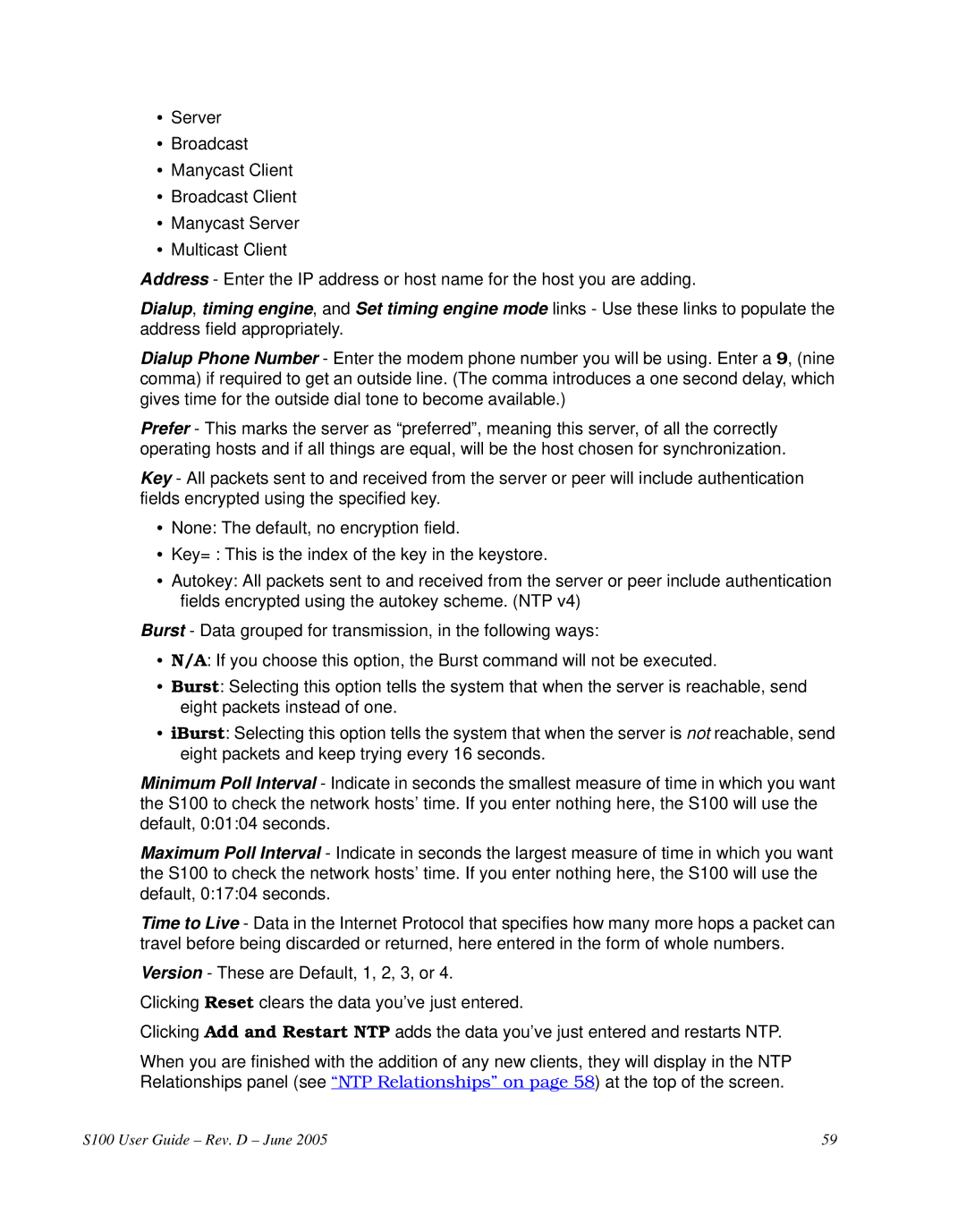•Server
•Broadcast
•Manycast Client
•Broadcast Client
•Manycast Server
•Multicast Client
Address - Enter the IP address or host name for the host you are adding.
Dialup, timing engine, and Set timing engine mode links - Use these links to populate the address field appropriately.
Dialup Phone Number - Enter the modem phone number you will be using. Enter a 9, (nine comma) if required to get an outside line. (The comma introduces a one second delay, which gives time for the outside dial tone to become available.)
Prefer - This marks the server as “preferred”, meaning this server, of all the correctly operating hosts and if all things are equal, will be the host chosen for synchronization.
Key - All packets sent to and received from the server or peer will include authentication fields encrypted using the specified key.
•None: The default, no encryption field.
•Key= : This is the index of the key in the keystore.
•Autokey: All packets sent to and received from the server or peer include authentication fields encrypted using the autokey scheme. (NTP v4)
Burst - Data grouped for transmission, in the following ways:
•N/A: If you choose this option, the Burst command will not be executed.
•Burst: Selecting this option tells the system that when the server is reachable, send eight packets instead of one.
•iBurst: Selecting this option tells the system that when the server is not reachable, send eight packets and keep trying every 16 seconds.
Minimum Poll Interval - Indicate in seconds the smallest measure of time in which you want the S100 to check the network hosts’ time. If you enter nothing here, the S100 will use the default, 0:01:04 seconds.
Maximum Poll Interval - Indicate in seconds the largest measure of time in which you want the S100 to check the network hosts’ time. If you enter nothing here, the S100 will use the default, 0:17:04 seconds.
Time to Live - Data in the Internet Protocol that specifies how many more hops a packet can travel before being discarded or returned, here entered in the form of whole numbers.
Version - These are Default, 1, 2, 3, or 4.
Clicking Reset clears the data you’ve just entered.
Clicking Add and Restart NTP adds the data you’ve just entered and restarts NTP.
When you are finished with the addition of any new clients, they will display in the NTP Relationships panel (see “NTP Relationships” on page 58) at the top of the screen.
S100 User Guide – Rev. D – June 2005 | 59 |
